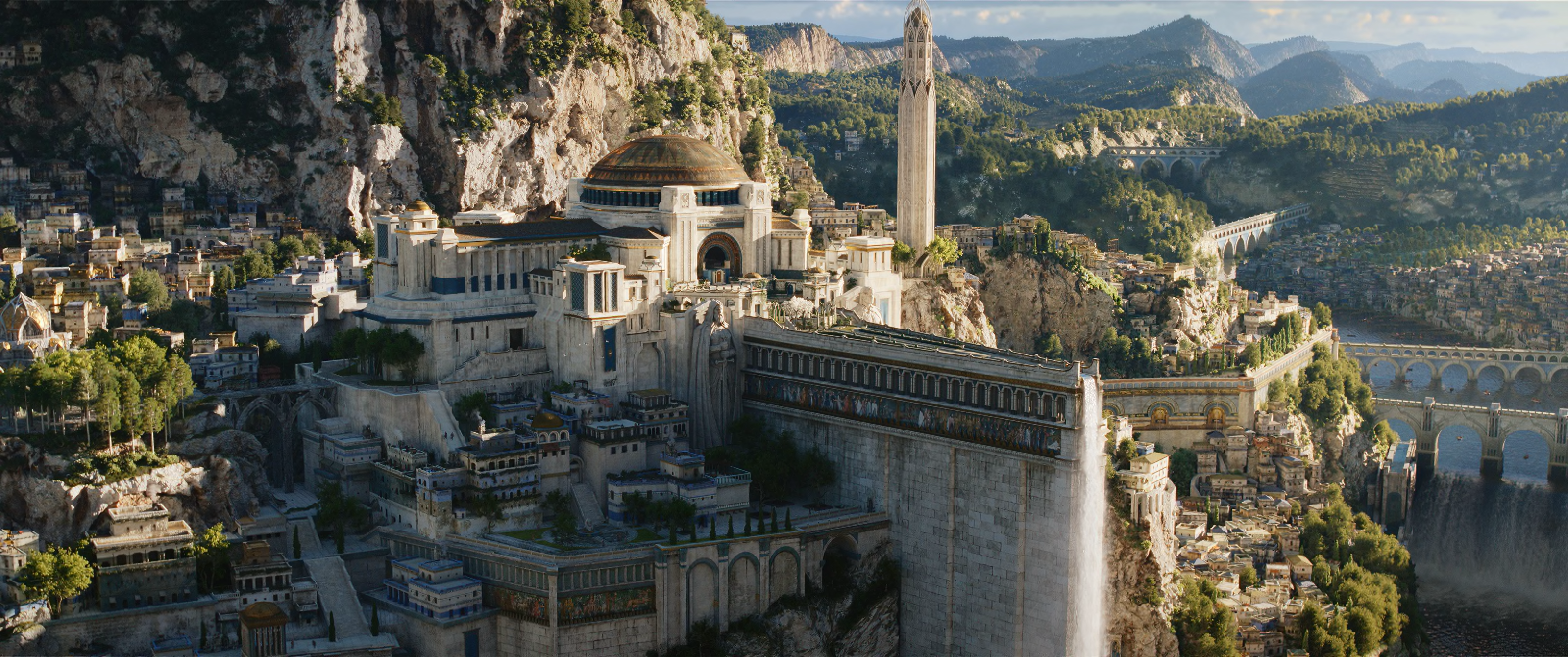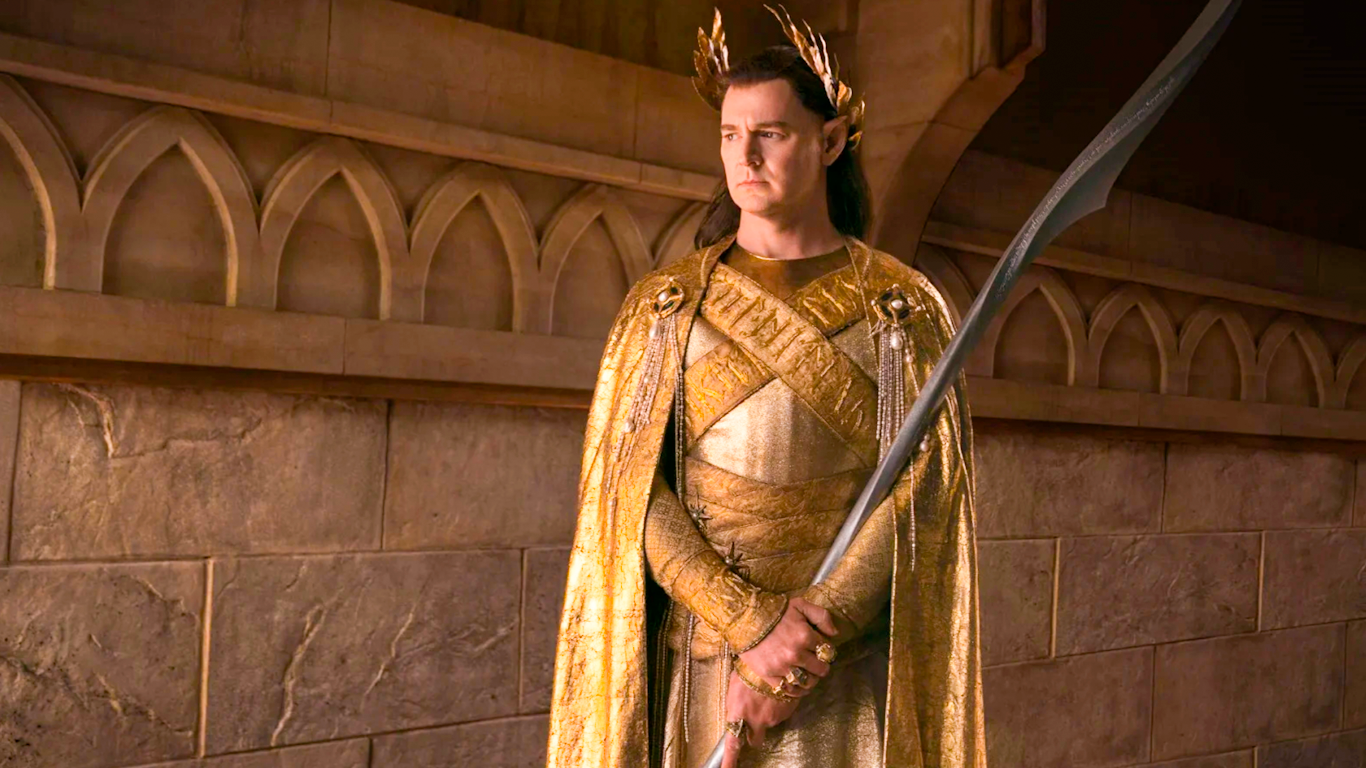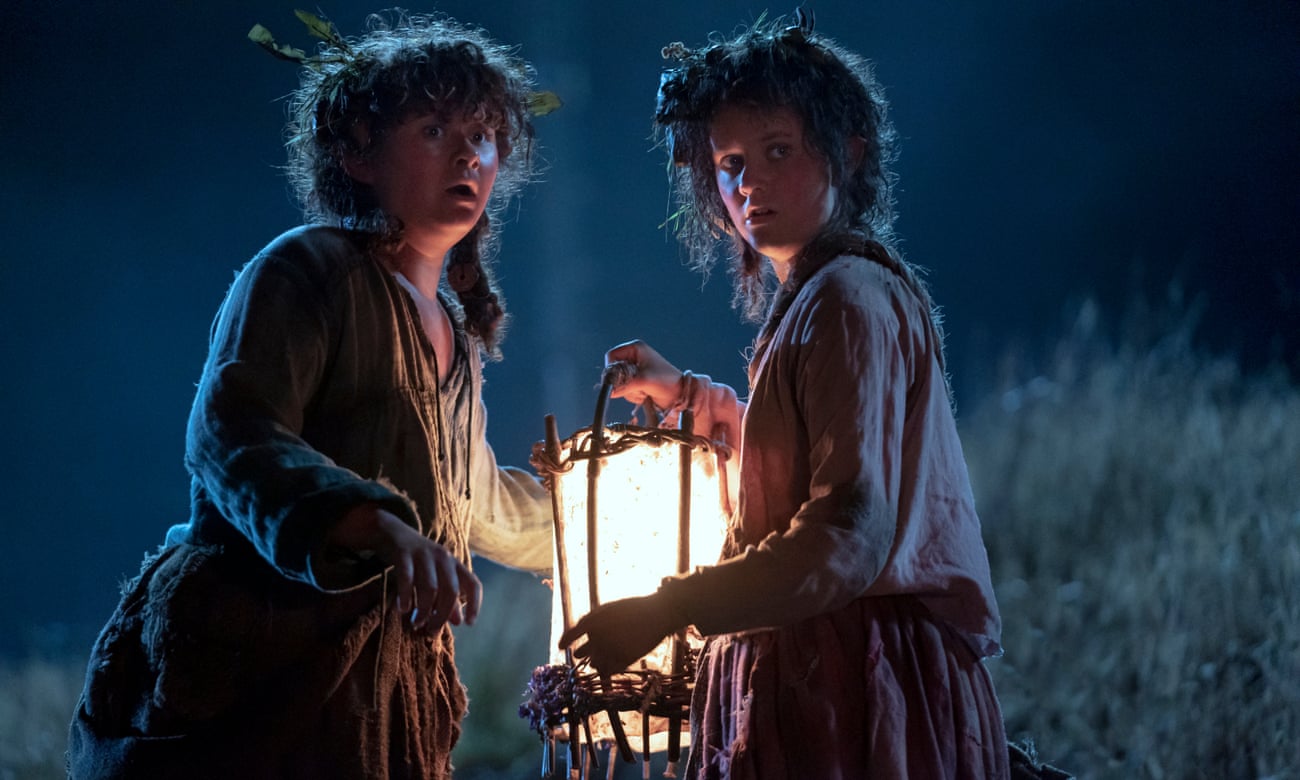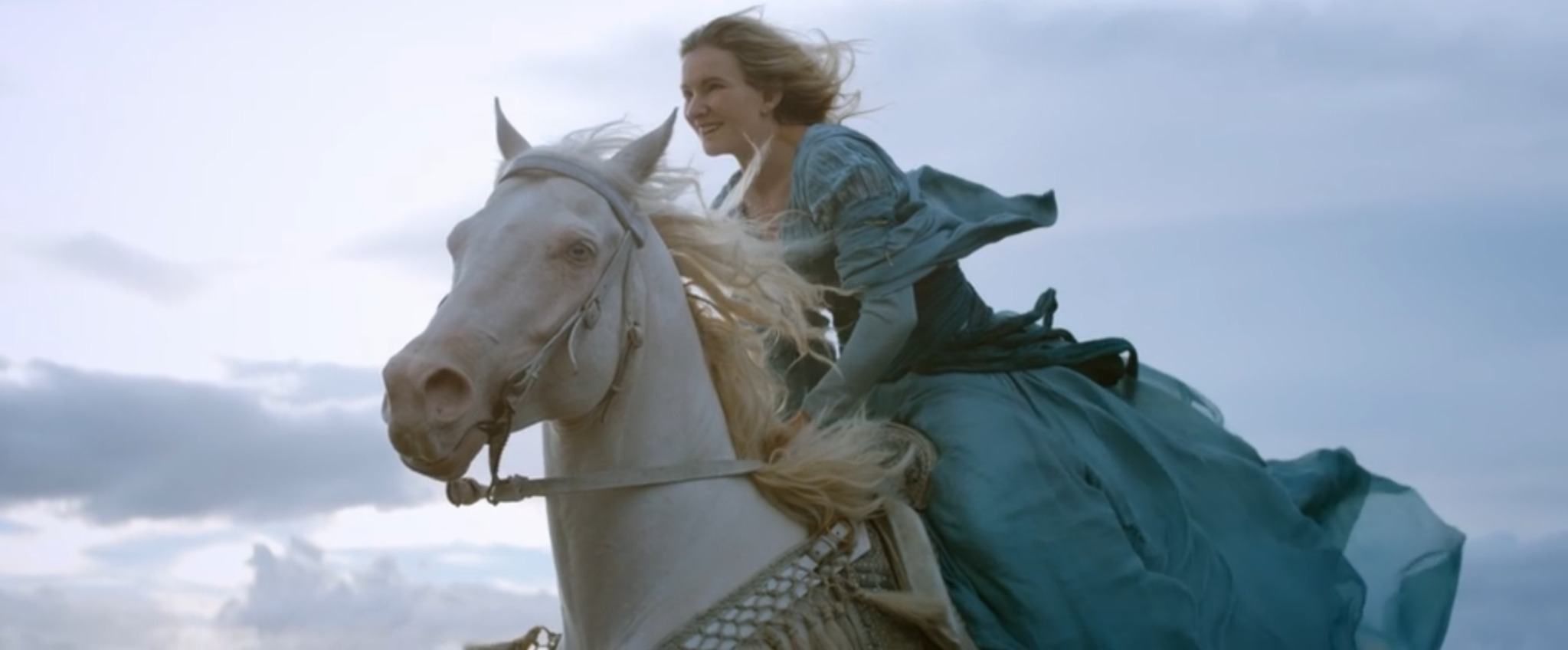 | ||||
| "Galadriel, Galadriel...More fair than thoughts of Mortal Men.” |
 |
| Númenor |
However, people must understand that the entire Silmarillion is compressed into a five minute summary, because The Rings of Power is to be the story of the Second Age of Middle-earth, quite a feat in itself. So we are introduced to Galadriel and her brother the great Finrod Felegund, later King of Nargothrond. But Finrod's kingship and the lost elven kingdoms of the First Age are not mentioned, just his unflinching fight against the Great Enemy Morgoth and Morgoth's evil deputy Sauron. Galadriel's marriage to Celeborn, cousin of elven-king Thingol, whom she meets in the enchanted Forest of Doriath in the First Age, is also left out. I assume Celeborn will surface at some point, since it is he and Galadriel's daughter Celebrian whom Elrond marries. Elrond, as Herald of the High King Gil-galad, is one of the main characters in the new series. His lowly half-elven status is possibly the reason he is in service to the High Elves, even though he is a direct descendant of King Thingol through Luthien. Elrond's brother Elros was the first king of Númenor, as all Tolkien fans know. So in weaving a story that can be followed by everyone, including those who have never read the books, the Amazon people had to simplify a story which is more complex than that of the Wars of the Roses.
From The Collider:
The highly anticipated fantasy series The Lord of the Rings: The Rings of Power is Amazon's biggest gamble into original content so far. Although the studio has found success with its adaptations of the Jack Ryan and Reacher franchises, crafting a new series within the world of J.R.R. Tolkien’s Middle-earth comes with high expectations. Tolkien’s fans are renowned for their passion, and Peter Jackson’s film trilogy attracted a whole new generation to enter the world of Dwarves, Elves, Orcs, Dragons, and Hobbits.
However, The Rings of Power has the benefit of telling a story that Tolkien buffs are already familiar with. Set during the Second Age of Middle-earth, the series explores the dark lord Sauron’s first rise to power and the alliance of different species that ultimately brought him down. The “Lord of the Rings” himself attempts to control Middle-earth through the influence of the One Ring. Sauron’s source of power gives him control over all the other rings dispersed to the leaders of men, Dwarves, and Elves
The Rings of Power answers a question that The Lord of the Rings film trilogy didn’t focus on: how were the rings created? Although the initial forging of the magical items is briefly featured in the opening sequence of The Lord of the Rings: The Fellowship of the Ring, The Rings of Power will show how Sauron’s deceit led the leaders of Middle Earth to become corrupted. Sauron was able to disguise himself, and convince Elven blacksmiths to create the rings. (Read more.)
In regard to the skin color of various elves in Tolkien, I recall reading about a Dark Elf in the Silmarillion. On the other hand, most of the High Elves are described as being "fair" which usually means having white skin, even when they have dark hair, like Arwen and Elrond. (Elrond, for that matter, is half-Elven.) I notice that all the High Elves are white. Perhaps Amazon will be called "racist" for doing so. Personally, I do not object to a black elf or black dwarves or black harfoots; I recall some of the creatures of Middle-Earth being described as "brown," especially those from the south. At any rate, because the entire thing is a fairy tale, it really does not bother me what color anyone's skin is, as long as it does not change the Tolkien canon too drastically.
I do understand, however, why Tolkien fans are objecting to what they perceive as "wokeness" and the so-called "real world" being imposed on Tolkien's stories. People have a right to object and voice their disappointment over their perception of a beloved story being distorted without being labelled "racist." Just because someone disagrees with the casting of a certain actor or actress does not make them a racist or a Nazi.
From First Things:
The Harfoots are the show’s biggest innovation and most charming element. Tolkien is silent regarding Hobbits in the Second Age. The showrunners depict Harfoots as nomadic precursors to the Shire-dwelling Hobbits we know, a close-knit band of small-statured travelers specializing in camouflage. In a delightful introductory scene, the Harfoots and their entire settlement emerge from behind cleverly constructed screens and covers made of foliage. The idea seems to be that the history of the Second Age has no record of Hobbits because they were just that good at hiding.
Nori Brandyfoot has that rare taste for adventure that will, in a future age, distinguish Bilbo and Frodo Baggins from their Hobbit kin. It leads Nori to follow a falling star and find a wild-eyed, clearly magical man. Defying Harfoot norms of avoiding contact with outsiders, Nori offers the stranger shelter, food, and clothing as she tries to learn what he is and where he came from. If I am reading the show’s clues aright, and the stranger turns out to be a force for good in Middle-earth, then the Harfoot story will offer an extremely Tolkien-esque appreciation of the importance of humble acts of kindness and hospitality. (Read more.)
I particularly love the depiction of the harfoots, the primitive ancestors of hobbits, who really remind me of the mythical brownies and sprites who people Celtic and Germanic fairy tales. As for the dwarves of the future Moria, they are a hoot. And I find Morfydd Clark's Galadriel to be ladylike and graceful. Although she is a bit of the mythical Amazon as Tolkien himself described her, leading quests and having adventures, her bearing is modest, regal and feminine. Elrond is courtly and princely; all the elves have beautiful manners, as do the harfoots, for that matter. There is much that is good and beautiful in this production; people should not just dismiss the entire series as "woke."
HERE is a guide to locations in The Rings of Power.
More on Númenor, HERE. And HERE.
More pictures on East of the Sun, West of the Moon. It is a really incredibly lavish production.
 |
| "Gil-galad was an elven king...." |
 |
| Harfoots in trouble... |


















No comments:
Post a Comment